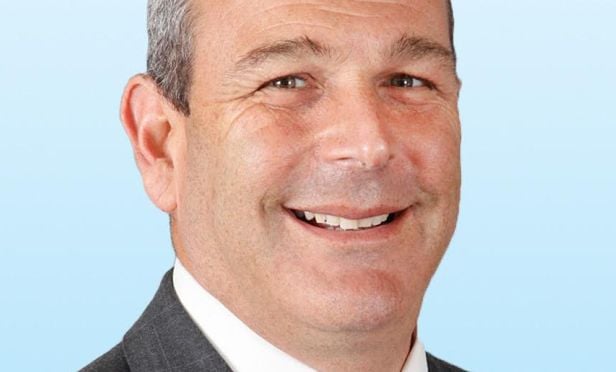MIAMI—As part of Colliers International South Florida's annual Industrial Owners Forum, more than 50 institutional owners gathered in Miami to have a closed discussion on the state of the industrial market in South Florida, where they own properties. Colliers International's industrial broker Steven Wasserman, who hosted the forum and led the discussion, sat down with GlobeSt.com to highlight the main takeaways from the discussion and the sentiment these influential leaders have about South Florida's industrial market.
The first big question: What type of activity are institutional owners seeing in South Florida's hottest industrial submarkets? (Do you agree that diversity is a key word in the region's industrial market? Sound off here.
“We are seeing multiple buyers bidding on a limited supply of properties that come to market,” Wasserman says. “As a result, cap rates can be 4.75% and lower. “We are seeing reluctant sellers agree to sell their class A industrial assets just because they are unable to refuse the incredible offers they are getting.”
Wasserman is also seeing institutional owners build new product to potentially obtain a higher yield. But having said that, he continues, it is important to look at what's happening in each of the South Florida's industrial submarkets.
“In Doral/Airport West and Medley /Hialeah Gardens—two of the most sought after submarkets in Miami-Dade County—the flight to quality has been a challenge for many institutional owners,” Wasserman says. “More tenants are flocking to these markets with the delivery of new and improved industrial buildings featuring taller clear heights, better overall layouts and more sophisticated technology in these submarkets.”
In Southwest Broward, he continues, the industrial market is very tight and market drivers remain healthy. He has heard owners share stories of tenants signing within 24 hours of viewing properties and described this activity as reminiscent of being on top of the cycle.
As Wasserman sees it, the strength of the market is luring investor attention. They are scouring the market for buildings that are not on the market and paying above market price. (One developer is betting $150 million a spec industrial project.)
“In Palm Beach County, owners are seeing activity increase as tenants push north,” Wasserman says. “McCraney Property Group is currently constructing Turnpike Business Park and describes the market as much friendlier environment due to the ease of the permitting process. Additionally, average deal sizes are slightly smaller at 20,000 square feet.”
MIAMI—As part of Colliers International South Florida's annual Industrial Owners Forum, more than 50 institutional owners gathered in Miami to have a closed discussion on the state of the industrial market in South Florida, where they own properties. Colliers International's industrial broker Steven Wasserman, who hosted the forum and led the discussion, sat down with GlobeSt.com to highlight the main takeaways from the discussion and the sentiment these influential leaders have about South Florida's industrial market.
The first big question: What type of activity are institutional owners seeing in South Florida's hottest industrial submarkets? (Do you agree that diversity is a key word in the region's industrial market? Sound off here.
“We are seeing multiple buyers bidding on a limited supply of properties that come to market,” Wasserman says. “As a result, cap rates can be 4.75% and lower. “We are seeing reluctant sellers agree to sell their class A industrial assets just because they are unable to refuse the incredible offers they are getting.”
Wasserman is also seeing institutional owners build new product to potentially obtain a higher yield. But having said that, he continues, it is important to look at what's happening in each of the South Florida's industrial submarkets.
“In Doral/Airport West and Medley /Hialeah Gardens—two of the most sought after submarkets in Miami-Dade County—the flight to quality has been a challenge for many institutional owners,” Wasserman says. “More tenants are flocking to these markets with the delivery of new and improved industrial buildings featuring taller clear heights, better overall layouts and more sophisticated technology in these submarkets.”
In Southwest Broward, he continues, the industrial market is very tight and market drivers remain healthy. He has heard owners share stories of tenants signing within 24 hours of viewing properties and described this activity as reminiscent of being on top of the cycle.
As Wasserman sees it, the strength of the market is luring investor attention. They are scouring the market for buildings that are not on the market and paying above market price. (One developer is betting $150 million a spec industrial project.)
“In Palm Beach County, owners are seeing activity increase as tenants push north,” Wasserman says. “McCraney Property Group is currently constructing Turnpike Business Park and describes the market as much friendlier environment due to the ease of the permitting process. Additionally, average deal sizes are slightly smaller at 20,000 square feet.”
Want to continue reading?
Become a Free ALM Digital Reader.
Once you are an ALM Digital Member, you’ll receive:
- Breaking commercial real estate news and analysis, on-site and via our newsletters and custom alerts
- Educational webcasts, white papers, and ebooks from industry thought leaders
- Critical coverage of the property casualty insurance and financial advisory markets on our other ALM sites, PropertyCasualty360 and ThinkAdvisor
Already have an account? Sign In Now
*May exclude premium content© 2024 ALM Global, LLC, All Rights Reserved. Request academic re-use from www.copyright.com. All other uses, submit a request to [email protected]. For more information visit Asset & Logo Licensing.









